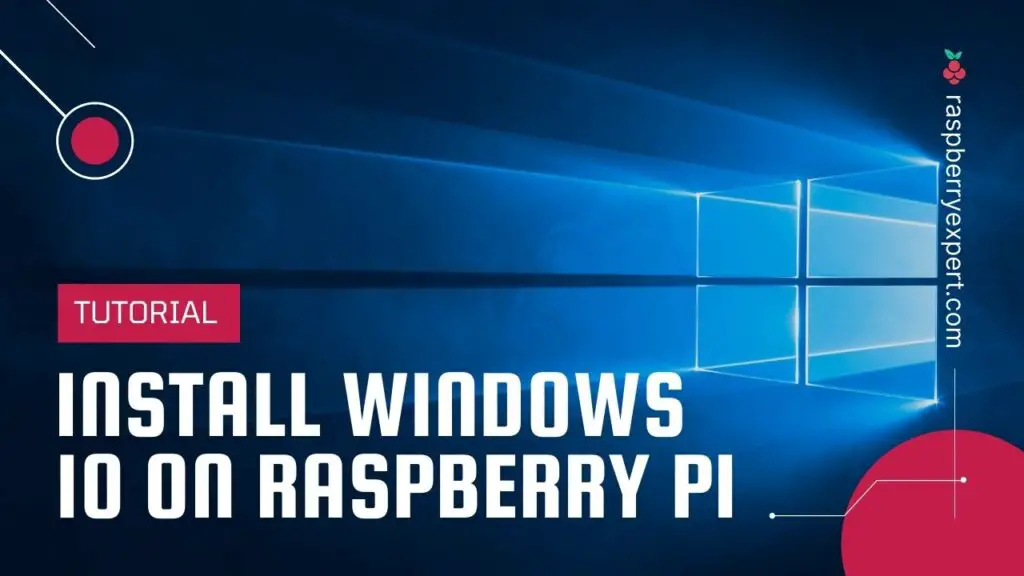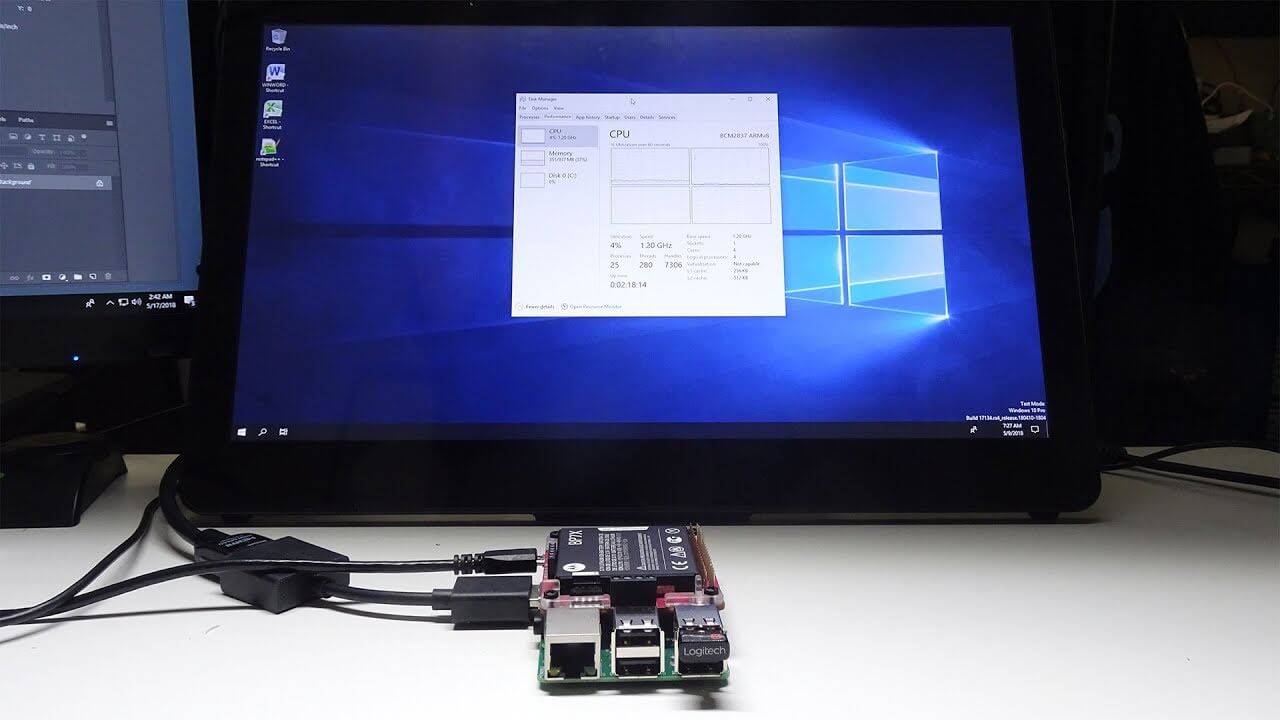Hey there, tech enthusiasts! Are you ready to dive into the world of remote access and unlock the full potential of your Raspberry Pi? Today, we’re going to explore how to remote into Raspberry Pi from Windows 10. Whether you’re a hobbyist, a professional, or just someone who loves tinkering with tech, this guide is here to help you master this skill. So, buckle up and let’s get started!
Remote access has become an essential tool in our increasingly connected world. Imagine being able to control your Raspberry Pi from the comfort of your Windows 10 machine without even being in the same room. Sounds awesome, right? Well, it’s not only possible but also surprisingly easy once you know the ropes. In this article, we’ll walk you through every step, ensuring you’re set up for success.
Now, before we dive deep into the nitty-gritty, let’s address the elephant in the room: why does remote access matter? It’s all about convenience and efficiency. By learning how to remote into Raspberry Pi from Windows 10, you can save time, streamline your workflow, and even troubleshoot issues from afar. So, whether you’re managing a home automation system or running a server, this skill is a game-changer. Let’s dig in!
Read also:Pining For Kim A Deep Dive Into The Phenomenon Thats Got Everyone Talking
Table of Contents
- Why Remote Into Raspberry Pi From Windows 10?
- Preparing Your System
- Setting Up SSH on Raspberry Pi
- Using PuTTY for Remote Access
- VNC for Remote Access
- Troubleshooting Tips
- Advanced Techniques
- Security Considerations
- Common Questions About Remote Access
- Conclusion: Take Your Skills to the Next Level
Why Remote Into Raspberry Pi From Windows 10?
Alright, let’s break it down. Remote access isn’t just for the pros; it’s for anyone who wants to take control of their tech setup. When you remote into Raspberry Pi from Windows 10, you’re essentially giving yourself the power to manage your projects from anywhere. Need to check on your home automation system while you’re at work? Done. Want to tweak your media server without unplugging everything? Easy peasy.
Here’s the deal: Raspberry Pi is a tiny powerhouse that can handle a ton of tasks, but sometimes, having it physically connected to a monitor and keyboard isn’t practical. That’s where remote access comes in. With Windows 10, you’ve got a robust platform to connect to your Pi and manage it seamlessly.
Plus, it’s super cost-effective. You don’t need to invest in extra hardware or fancy software. All you need is your Pi, your Windows 10 PC, and a little know-how. And guess what? We’re about to give you that know-how!
Preparing Your System
What You’ll Need
Before we jump into the setup, let’s make sure you’ve got everything you need. Here’s a quick checklist:
- A Raspberry Pi (any model will do)
- A Windows 10 PC
- An active internet connection
- A keyboard and mouse for initial setup
- A monitor (temporarily, if needed)
- Software tools like PuTTY or VNC Viewer
Got all that? Great! Now, let’s move on to the next step.
Read also:Czech Wife Swap A Cultural Phenomenon You Need To Understand
Setting Up SSH on Raspberry Pi
Enabling SSH
SSH (Secure Shell) is your gateway to remote access. It’s like a secret tunnel that lets you connect to your Pi securely. To get started, boot up your Raspberry Pi and log in. If you’re using Raspbian (the default OS for Pi), you can enable SSH through the Raspberry Pi Configuration tool.
Steps:
- Open the terminal on your Pi.
- Type
sudo raspi-configand hit Enter. - Select
Interfacing Options. - Choose
SSHand enable it. - Reboot your Pi to apply the changes.
Voila! SSH is now ready to roll. But wait, there’s more. You’ll also need to find your Pi’s IP address. Type hostname -I in the terminal, and it’ll display the address. Write it down; you’ll need it later.
Using PuTTY for Remote Access
Connecting via SSH
PuTTY is a free and awesome tool that lets you connect to your Pi using SSH. Here’s how you can set it up:
- Download PuTTY from the official website and install it on your Windows 10 PC.
- Launch PuTTY and enter your Pi’s IP address in the
Host Name (or IP address)field. - Set the port to
22(default for SSH). - Click
Opento start the connection.
You’ll be prompted to log in. Use the same username and password you use for your Pi. Boom! You’re now connected via SSH. Pretty cool, right?
VNC for Remote Access
For the GUI Lovers
If you prefer a graphical interface, VNC is your best friend. It lets you control your Pi’s desktop just like you would with a physical keyboard and mouse. Here’s how to set it up:
- On your Pi, enable VNC through the Raspberry Pi Configuration tool (
sudo raspi-config). - Download and install VNC Viewer on your Windows 10 PC.
- Launch VNC Viewer and enter your Pi’s IP address.
- Log in with your Pi credentials.
Now you’ve got full control over your Pi’s desktop. It’s like having it right in front of you, but without the clutter.
Troubleshooting Tips
When Things Go Wrong
Let’s face it: tech stuff doesn’t always go as planned. If you run into issues, here are some tips to get you back on track:
- Connection Issues: Double-check your IP address and ensure both devices are on the same network.
- Authentication Problems: Make sure your username and password are correct. If you’ve changed them recently, update them in your remote access tool.
- Firewall Blocks: Ensure your firewall isn’t blocking the necessary ports (22 for SSH).
Still stuck? Google is your best friend. Chances are, someone else has faced the same issue and found a solution.
Advanced Techniques
Taking It to the Next Level
Once you’ve mastered the basics, it’s time to level up. Here are a few advanced techniques to explore:
- Port Forwarding: Access your Pi from anywhere in the world by configuring your router.
- SSH Tunnels: Securely transfer files between your Pi and Windows 10 PC.
- Automated Scripts: Set up scripts to automate tasks on your Pi remotely.
These techniques might seem intimidating at first, but with a little practice, you’ll be a pro in no time.
Security Considerations
Protect Your Pi
Security is crucial when it comes to remote access. You don’t want unauthorized users gaining control of your Pi. Here are some tips to keep your setup secure:
- Use strong, unique passwords for your Pi.
- Enable two-factor authentication if possible.
- Regularly update your Pi’s software to patch vulnerabilities.
- Limit SSH access to specific IP addresses if you’re on a local network.
Remember, security is an ongoing process. Stay vigilant and keep your system protected.
Common Questions About Remote Access
Answers to Your Burning Questions
Here are some frequently asked questions to help clarify things:
- Q: Can I remote into Raspberry Pi from a Mac? Yes, absolutely! The process is similar, but you’ll use built-in tools like Terminal for SSH and Screen Sharing for VNC.
- Q: Do I need an internet connection? For local network access, no. But for remote access from outside your network, yes.
- Q: Can I use a different SSH client? Absolutely! Tools like MobaXterm and SSH Secure Shell are great alternatives.
Still have questions? Drop a comment below, and we’ll be happy to help!
Conclusion: Take Your Skills to the Next Level
And there you have it, folks! You’re now armed with the knowledge to remote into Raspberry Pi from Windows 10 like a pro. Whether you’re managing a home server, running a media center, or building a smart home system, remote access is your key to unlocking endless possibilities.
So, what are you waiting for? Dive in, experiment, and don’t forget to share your experiences with us. Leave a comment, hit that share button, and explore more articles on our site. Together, let’s build a tech-savvy community!
Until next time, stay curious and keep tinkering!


